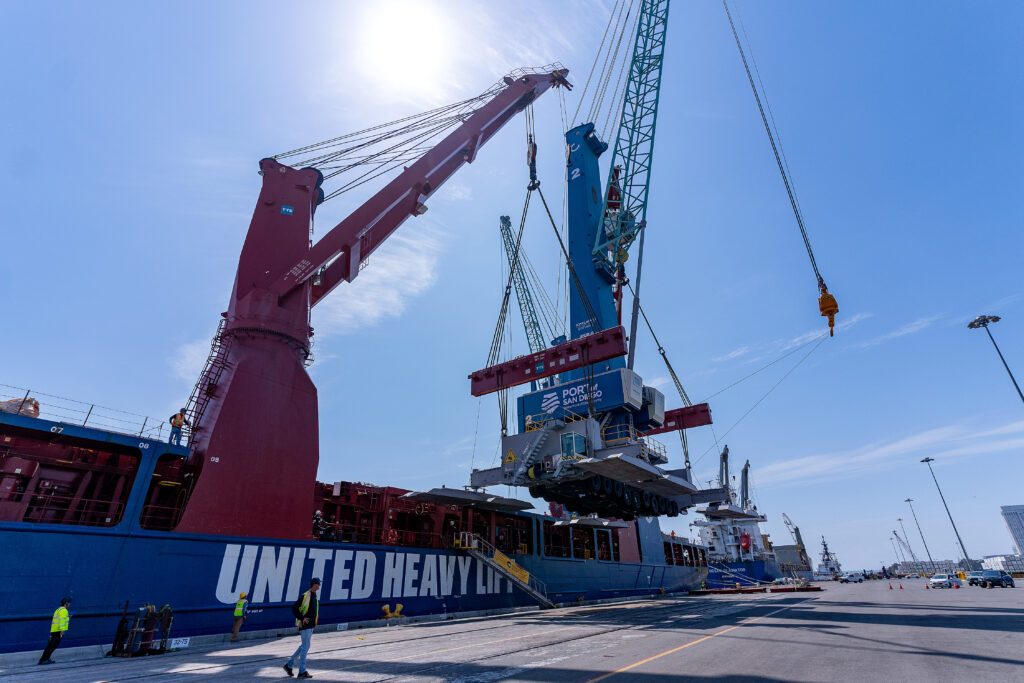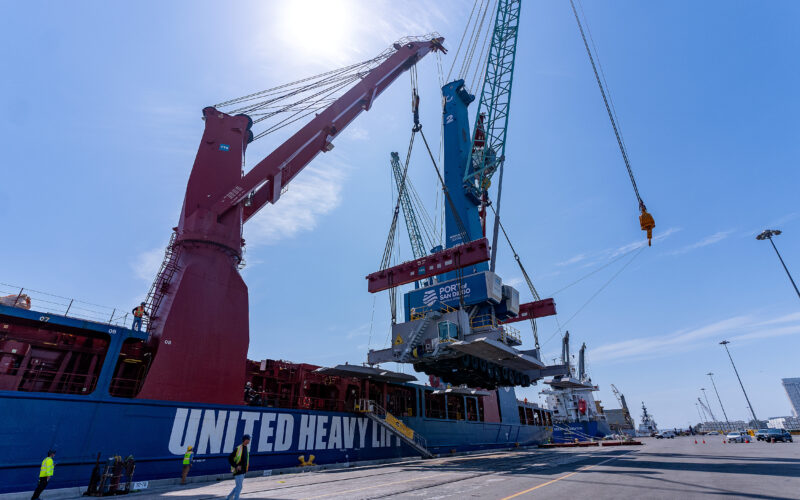(WASHINGTON) — A recent marine casualty involving a shipboard crane occurred while a 69-ton wind turbine nacelle was being offloaded. While hoisting, a wire rope parted, causing the load to fall eight feet to the deck, significantly damaging the vessel and resulting in a total loss of the cargo.
Although no personnel casualties occurred, injury potential was high, as the load landed within three feet of workers. An investigation revealed corrosion, wear and monotonic ductile overload of the wire rope caused the failure. Further, it was concluded the wire rope was still within its permitted service life but should have been replaced prior to the incident due to the corrosion and wear.

Cargo transfers using shipboard cranes are common and increase vessel capabilities to service ports with minimal shoreside infrastructure. Although crane wire rope failures are rare, the consequences are serious and can include vessel damage, cargo loss, injury and death.
While not addressed in regulation or convention, servicing and discard criteria are outlined in class rules and manufacturer specifications. The industry standard period of employment is 10 years, but suitability for service can be limited by corrosion and fatigue.
Given the potential wear associated with harsh operating environments, it is imperative that vessel operators employ robust inspection and testing to ensure equipment suitability through its lifespan.
Multi-layered construction inhibits inner core inspection and maintenance, creating physical condition uncertainty. To address this hazard, some manufacturers recommend using pressure lubricating devices to inject lubricant into the inner core, providing corrosion protection and reducing friction. Heavy lubricating grease applied to the outer strands may conceal surface defects that, if identified, could result in removal from service. While inspections and maintenance are essential, the only way to verify safe loading capacity is through periodic load tests, which are typically completed every five years and after major repairs.
Owner-operators are reminded that, for those ships on international voyages and subject to the SOLAS Convention, recent amendments to SOLAS include new regulations and associated guidelines for onboard lifting appliances, including cranes. The regulations and guidelines include mandatory requirements for the design, installation, testing, periodic inspection and documentation of lifting appliances and loose gear utilized with the appliance. A requirement for all lifting appliances, whether for new installation or previously installed, is that the safe working load (SWL) be established and permanently marked on the appliance.
The Coast Guard strongly recommends that vessels equipped with shipboard cranes:
• Implement increased load testing frequency to verify wire rope integrity between class
society mandated five-year load tests.
• Are provided with and utilize pressure lubricating devices as recommended by the manufacturer for routine maintenance.
• Ensure maintenance tracking systems align with manufacturer’s recommended maintenance protocol, including the period of employment and renewal of wire ropes.
• Consider shortened periods of employment and early renewal of crane wire ropes to prevent corrosion and fatigue induced failures.
• Ensure all shipboard crane operators are properly trained and cognizant of industry best practices.
• Implement increased wire rope visual inspection frequency.
• Degrease and remove all lubricant prior to crane wire rope visual inspections to ensure surface defects are not concealed.
This safety alert is provided for informational purposes only and does not relieve any domestic or international safety, operational, or material requirement. Developed by Sector Houston/Galveston and distributed by the Office of Investigations and Analysis. Questions may be sent to HQS-SMB-CG-INV@uscg.mil.
– U.S. Coast Guard

